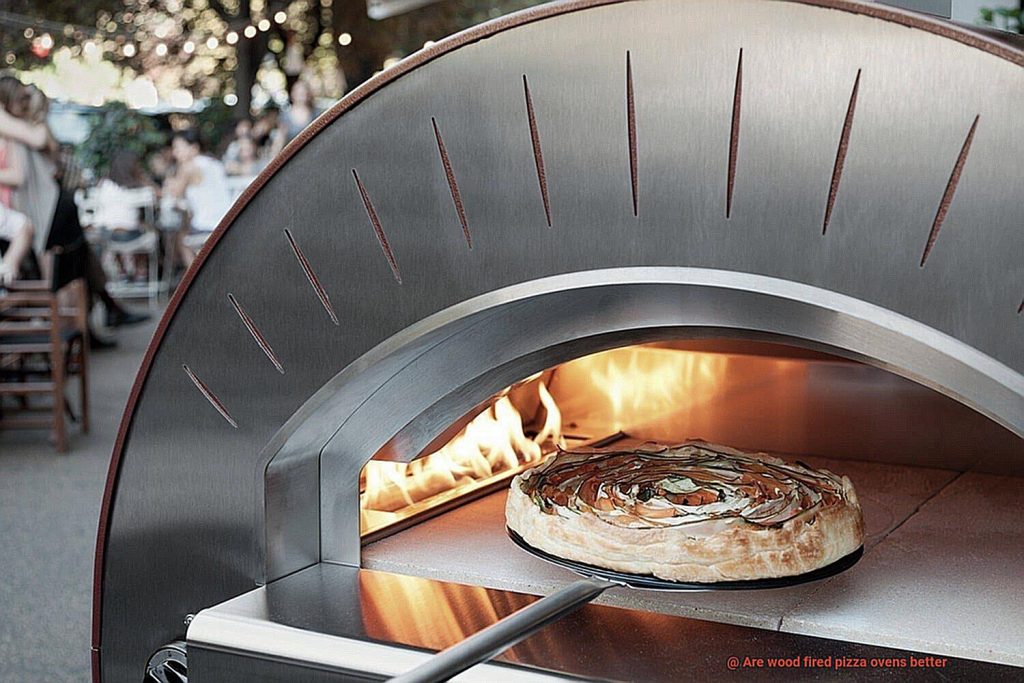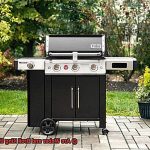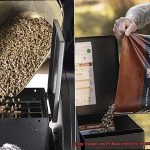Picture this: you, standing proudly in front of your grill, spatula in hand, ready to unleash your culinary prowess. But as you ponder your options – charcoal, propane, or the trendy wood pellet smokers – a nagging question lingers in the back of your mind: are these smokers toxic? Safety is paramount, after all.
So let’s dive into the smoky abyss and uncover the truth about wood pellet smokers’ potential for toxicity. In this blog post, we’ll separate fact from fiction and arm you with the knowledge to make an informed decision on your grilling journey.
Get ready to breathe easy as we debunk any fears and shed light on this sizzling hot topic.
Contents
What are Wood Pellet Smokers?
These innovative smokers have revolutionized the grilling world by combining the convenience of gas grills with the rich flavors of traditional charcoal or wood-fired cooking. In this comprehensive guide, we will explore what wood pellet smokers are, how they work, their advantages over traditional grills, and how to use them effectively to elevate your outdoor cooking experience.
What are Wood Pellet Smokers?
Wood pellet smokers, also known as pellet grills, are outdoor cooking devices that utilize specially designed wood pellets as their fuel source. These pellets are crafted from compressed sawdust and other wood byproducts, making them an eco-friendly option. The pellets are loaded into a hopper that feeds them into a combustion chamber. Once ignited, the pellets burn and produce heat and smoke, creating a consistent cooking temperature that permeates your food with mouthwatering flavors.
Features and Advantages:
Wood pellet smokers offer a plethora of features that enhance your grilling experience. Most models include a spacious cooking chamber complete with grates or racks for optimal food placement. Some even boast additional features like searing grates or rotisserie attachments to provide you with unparalleled versatility in your cooking endeavors.
The advantages of wood pellet smokers over traditional grills are vast. Firstly, they offer unmatched versatility in cooking methods, allowing you to smoke, grill, roast, bake, and barbecue with ease by simply adjusting the temperature settings. Secondly, their precise temperature control ensures consistently perfect results every time you cook. Additionally, wood pellet smokers boast impressive efficiency levels by producing minimal ash and reducing the risk of flare-ups. They also provide a clean-burning fire without excessive smoke, resulting in a more enjoyable cooking experience.
Effective Use:
To make the most out of your wood pellet smoker, follow these essential tips for effective use:
- Choose high-quality wood pellets made from clean and untreated wood to ensure food safety and enhance the flavor profile.
- Preheat your smoker before cooking to burn off any residual chemicals or contaminants.
- Ensure proper ventilation by keeping the lid partially open during use to minimize the risk of carbon monoxide poisoning.
- Utilize a digital controller or thermostat to maintain a consistent cooking temperature, guaranteeing perfectly cooked dishes.
- Experiment with different wood pellet flavors such as hickory, mesquite, or applewood to elevate the smoky taste of your creations.
- Clean your smoker regularly to prevent grease and ash buildup, ensuring optimal performance.
Potential Toxicity of Wood Pellet Smokers
However, it is crucial to understand and address the potential toxicity risks associated with these smokers.
One major concern is the emission of harmful chemicals during the combustion process. Polycyclic aromatic hydrocarbons (PAHs) and volatile organic compounds (VOCs) are two such chemicals that can pose health risks. PAHs, known to be carcinogenic, can stick to your food and be ingested when consumed. VOCs contribute to air pollution and have been linked to respiratory problems.
The type of wood pellets used can also impact toxicity levels. Some woods release higher levels of potentially harmful compounds compared to others. To minimize this risk, opt for reputable brands that use natural and untreated wood pellets.
To reduce potential toxicity while grilling up a storm, follow these practical steps. First, always use your wood pellet smoker in a well-ventilated area or outdoors to minimize exposure to smoke and fumes. Good airflow is key.
Preheat your smoker at a higher temperature for a few minutes before adding food. This helps burn off any potential contaminants or residues on the grill grates or inside the smoker. Nobody wants that stuff sticking to their delicious meat.
Avoid excessive charring or burning of food, as this can increase the formation of harmful compounds. Use a meat thermometer to ensure proper cooking temperatures and prevent overcooking.
Lastly, regular maintenance and cleaning of your smoker are essential. Residues can build up over time and contribute to the release of toxic substances. So keep that bad boy clean.
Remember, the level of toxicity can vary based on factors like wood pellet type, cooking practices, and ventilation. By taking these precautions and using your wood pellet smoker responsibly, you can enjoy your favorite grilled treats with peace of mind.
Carbon Monoxide (CO) Emissions from Burning Wood Pellets
Grilling with wood pellet smokers is a culinary delight, but it’s crucial to be mindful of carbon monoxide (CO) emissions. Although this odorless and colorless gas can pose health risks when inhaled in high concentrations, there are effective steps that can be taken to minimize CO emissions while still enjoying the art of grilling.
Choose High-Quality Wood Pellets:
Opt for premium wood pellets made from pure hardwood without fillers or additives. Look for certifications like “Premium” or “100% Hardwood” to ensure cleaner burning and reduced CO emissions. By selecting high-quality pellets, you can enhance both the flavor and safety of your grilled dishes.
Maintain Proper Ventilation:
Grill in a well-ventilated area, preferably outdoors or under a properly functioning range hood. Good airflow helps disperse CO emissions, reducing the risk of it accumulating in enclosed spaces. Prioritize safety by ensuring you have ample ventilation during your grilling sessions.
Preheat at a Higher Temperature:
Before grilling, preheat your smoker at a higher temperature for around 15 minutes. This process helps burn off any potential contaminants that might have adhered to the interior surfaces during storage, minimizing the production of CO.
Avoid Excessive Charring:
Excessive charring of food can increase the production of CO. To minimize this, avoid flare-ups caused by excessive fat dripping onto the flames. Trim excess fat from meats and use indirect grilling methods to reduce charring and lower CO emissions.
Use a Meat Thermometer:
Cooking food thoroughly not only ensures its safety but also reduces cooking time and potential CO emissions. Invest in a reliable meat thermometer to monitor internal temperatures accurately, ensuring safe consumption without compromising on taste.
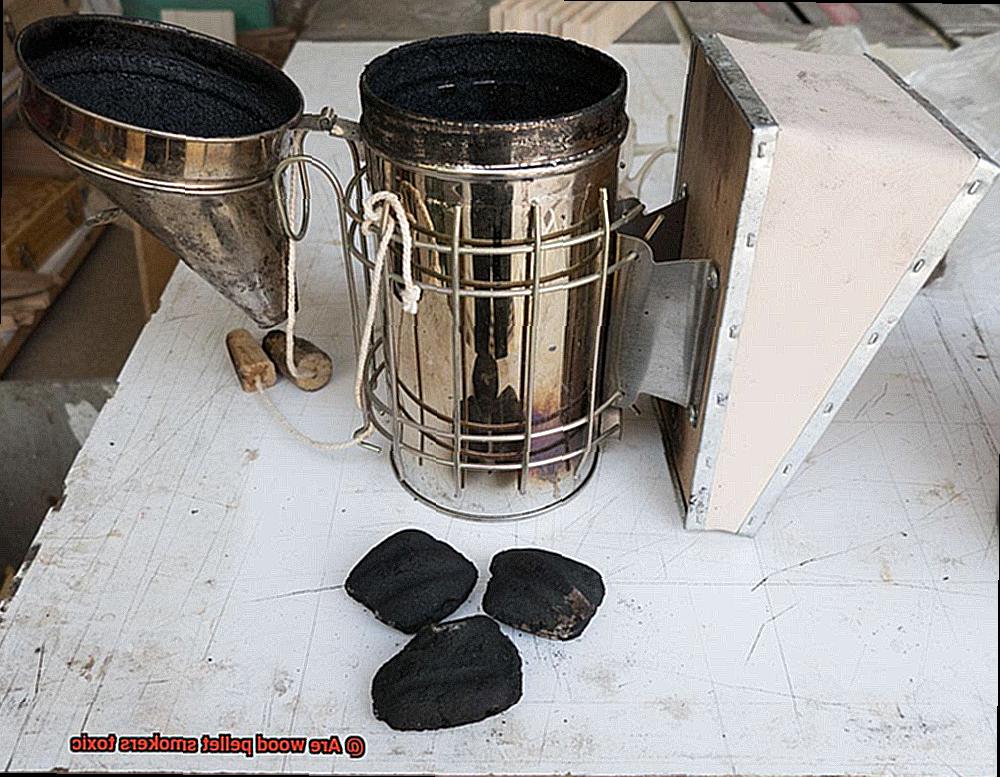
Regularly Clean Your Smoker:
Regularly cleaning your wood pellet smoker is crucial to remove grease buildup and improve its overall efficiency. A dirty smoker may produce more CO due to incomplete combustion. By undertaking regular maintenance, you can enhance the safety of your grilling experience.
Volatile Organic Compounds (VOCs) Released During Combustion
As the flames dance and the tantalizing aromas fill the air, it is crucial to be aware of the potential health risks lurking in the shadows – the volatile organic compounds (VOCs) released during combustion. In this enlightening article, we delve into the treacherous world of VOCs, shedding light on their dangers and providing you with practical tips to minimize exposure to these hazardous chemicals.
Understanding VOCs:
VOCs are a nefarious group of chemicals that effortlessly evaporate at room temperature, posing a grave threat to human health when inhaled. Picture this: as you ignite your wood pellet smoker, a sinister cast of characters, including benzene, formaldehyde, toluene, and xylene, stealthily infiltrates the air. Prolonged or intense exposure to these compounds can trigger respiratory irritation, unleash debilitating headaches and dizziness, and even unleash a tempest of grave conditions such as cancer and organ damage.
Minimizing Exposure:
- Opt for high-quality wood pellets: Safeguard your grilling escapades by selecting pellets untainted by additives or chemicals. Seek out pure hardwood pellets without the shackles of binders or fillers. Let your grilling endeavors be free from VOC-infested burdens.
- Ensure proper ventilation: Summon the winds of change. Transform your grilling battleground into a well-ventilated haven or venture outdoors where nature’s breath can whisk away those pernicious VOCs. A gust of fresh air dissolves their malevolent grip, diluting their concentration in your cooking realm.
- Regular maintenance and cleaning: Banish the remnants of past grilling conquests. Regularly cleanse your smoker’s chamber to vanquish the buildup of combustion byproducts that might harbor VOCs. Sweep away the ashes and expunge the residues of yesteryears, leaving no trace of danger behind.
Consider a pellet smoker with an efficient burning system: Embrace innovation and let technology be your ally. Seek out pellet smokers endowed with advanced air supply control, ensuring a symphony of efficient combustion. Witness the glory of reduced emissions and lower VOC release as you revel in the art of grilling.
The Type of Wood Used in Wood Pellets Can Affect Toxicity
It’s a fascinating aspect of the grilling world that often goes unnoticed. Let’s take a deep dive into the subject and uncover the truth about how the type of wood used in wood pellets can affect toxicity.
Wood pellets can be categorized into two main types: hardwoods and softwoods. Hardwoods, such as oak, hickory, and maple, are popular choices for smoking due to their rich flavors and enticing aromas. However, when burned, these hardwoods may release higher levels of harmful compounds. On the other hand, softwoods like pine and fir contain high amounts of resin, which can lead to the production of toxic substances like formaldehyde and benzene.
When selecting wood pellets for your smoker, it’s important to consider the pros and cons of each type:
Hardwoods offer a range of benefits. They provide rich flavors and aromatic profiles that elevate your grilling experience. They are also widely available, making them easily accessible for most grill enthusiasts. However, it’s crucial to note that hardwoods may release higher levels of toxic compounds when burned at high temperatures or with excessive smoke production.
On the other hand, softwoods are not recommended for smoking due to their high resin content. The resin in softwoods can release toxic substances into the smoke, which compromises your health and enjoyment of grilled delicacies.
To mitigate potential health risks, it is recommended to use hardwood pellets that have been properly seasoned and dried. These pellets, often labeled as “low-resin” or “low-toxicity,” can help reduce the release of harmful compounds. Additionally, opting for pellets sourced from sustainable and responsibly managed forests ensures that no chemical treatments are introduced during production that could add to the smoke’s toxicity.
Remember, proper temperature control and moderation in smoke generation are essential. These practices ensure that your grilled masterpieces are not only flavorful but also safe to enjoy. Keep these tips in mind as you embark on your grilling adventures.
Preheating the Smoker to Reduce Potential Toxicity
Imagine the sizzling sound of your favorite cut of meat hitting the hot grates, filling the air with tantalizing aromas. As grilling enthusiasts, we all crave that perfect balance of flavor and tenderness. However, it is essential to be mindful of potential toxins that can be released when using wood pellet smokers. Fortunately, there is a simple yet vital step you can take to ensure a safer and more enjoyable grilling experience – preheating your smoker. In this article, we delve into the significance of preheating in reducing potential toxicity and reveal the secrets to doing it right.
Why Preheating Matters:
- Banishing Residue and Chemicals: By preheating your smoker, you initiate a process that causes any lingering residue or chemicals from previous use to burn off. This crucial step minimizes the risk of inhaling or ingesting harmful substances.
- Taming Moisture and Mold: Preheating also plays a role in eliminating moisture and mold that may have accumulated within the smoker. These unwelcome guests can release toxins when exposed to heat, posing health hazards if consumed or inhaled.
How to Preheat Your Smoker:
- Purge and Polish: Begin by purging any ash or debris from previous grilling sessions. Ensure that the vents are wide open to facilitate proper airflow.
- Select Premium Wood Pellets: Fill your smoker’s hopper with fresh wood pellets of your choice. Opt for seasoned hardwood pellets sourced from sustainable forests, as they possess lower toxicity levels.
- Fine-Tune the Temperature: Adjust the temperature control to your desired setting, typically ranging between 350°F and 400°F for optimal preheating.
- The Art of Waiting: Grant your smoker ample time to heat up, allowing a minimum of 15-20 minutes before introducing any culinary delights. This patient approach ensures even heat distribution, creating a consistent cooking environment.
- Embrace the Lid: During the preheating process, it is vital to keep the lid closed. This practice retains heat and facilitates proper air circulation within the smoker.
Remember:
- Consult your smoker’s user manual for specific preheating guidelines, as different models may vary in their requirements.
- Exercise caution by donning heat-resistant gloves and appropriate attire when handling hot surfaces.
Safe Grilling Practices to Minimize Risk of Toxicity
Summer is here, and that means it’s time to fire up the grill and indulge in mouthwatering barbecue delights. But before you dive into the world of sizzling steaks and juicy burgers, it’s essential to understand the importance of safe grilling practices. In this article, we’ll explore some expert tips to minimize the risk of toxicity and ensure your grilling experience is not only delicious but also worry-free.
Choose the Right Grill:
Investing in a high-quality wood pellet smoker made from food-grade materials is crucial. Look for certifications and labels that guarantee safety standards. A wood pellet smoker offers a smoky flavor while maintaining a consistent temperature, elevating your grilling game to new heights.
Use High-Quality Pellets:
Opt for 100% natural hardwood pellets without additives or fillers. Inferior quality pellets can release harmful substances when burned, affecting both taste and health. Stick to high-quality pellets for better-tasting food and peace of mind.
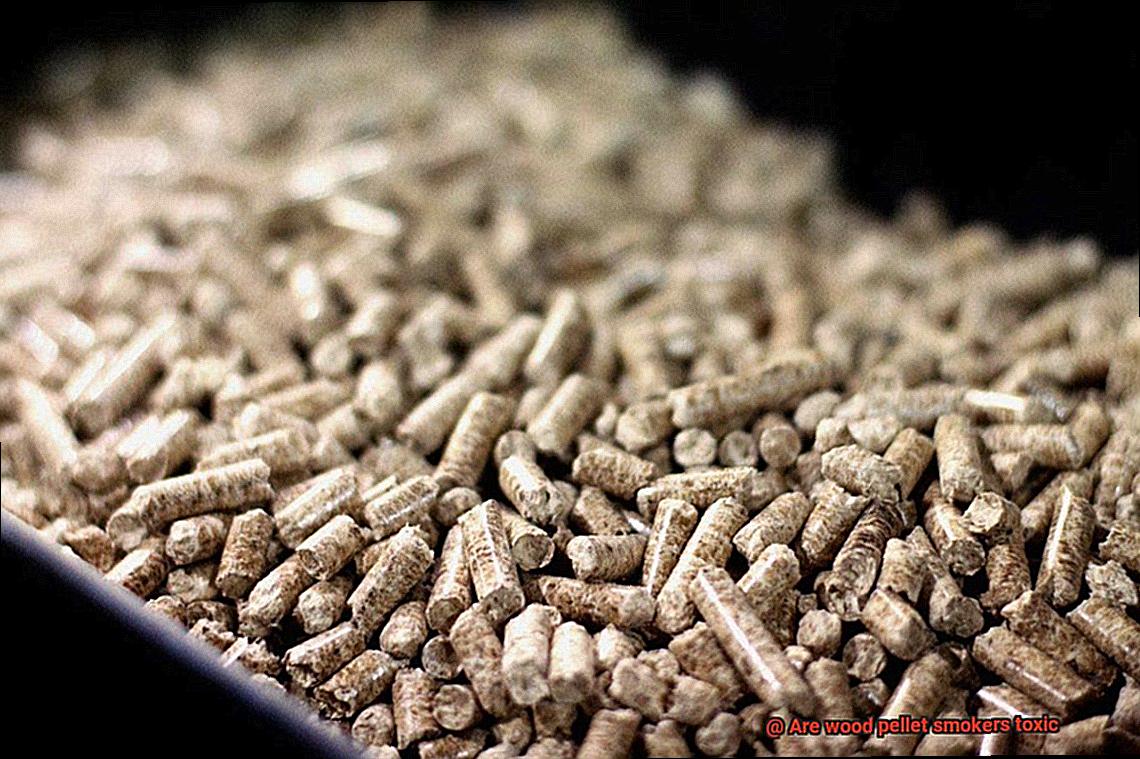
Preheat and Clean the Grill:
Preheating your grill helps eliminate residual chemicals or contaminants that may have accumulated on the grates or inside the grill. Cleaning thoroughly removes grease and food particles that can produce harmful smoke when heated. A clean grill equals a safer and tastier barbecue.
Maintain Proper Ventilation:
Grill outdoors in an open area with good airflow to prevent the buildup of toxic fumes. Grilling indoors without proper ventilation can lead to carbon monoxide accumulation. If indoor grilling is necessary, ensure there are windows or exhaust fans to keep the air fresh.
Limit Charring and Flames:
Excessive charring or flare-ups can create carcinogenic compounds. Keep a close eye on your grill, adjusting the heat accordingly. A meat thermometer will help you cook food thoroughly without overcooking or charring the exterior.
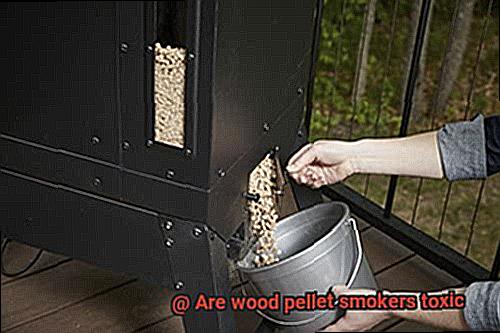
Marinate and Trim Fat:
Marinating your meat not only enhances flavor but also reduces the formation of harmful compounds. Use marinades with lemon juice, vinegar, or herbs that inhibit the production of carcinogens. Additionally, trim excess fat from meat to reduce flare-ups and minimize the release of harmful smoke.
oXXiOa_gIFM” >
Conclusion
In conclusion, wood pellet smokers have the potential to release harmful chemicals and toxins into the air when they burn. These include dangerous substances like polycyclic aromatic hydrocarbons (PAHs) and volatile organic compounds (VOCs), which can seriously impact our health. However, there are steps you can take to minimize the risk of toxicity.
To ensure food safety and reduce the release of harmful compounds, it is crucial to choose high-quality wood pellets made from clean and untreated wood. Don’t skimp on this. Preheating your smoker before cooking is also important as it helps burn off any residual chemicals or contaminants that may be present. And don’t forget about proper ventilation during use – this is key in preventing carbon monoxide poisoning.
Regular maintenance and cleaning of your smoker are absolutely crucial. Grease and ash buildup can contribute to the release of toxic substances, so make sure you stay on top of it. Another tip is to avoid excessive charring or burning of your food, as this reduces the formation of harmful compounds.
The type of wood used in your wood pellets matters too. Different woods can release varying levels of toxins, so opt for hardwood pellets that have been properly seasoned and dried. This will help keep toxicity levels down.
By following these guidelines and using your wood pellet smoker responsibly, you can enjoy mouthwatering grilled dishes without worrying about toxicity. Remember, safety should always come first. Choose high-quality pellets, maintain proper ventilation, preheat your smoker, and practice safe grilling techniques.

